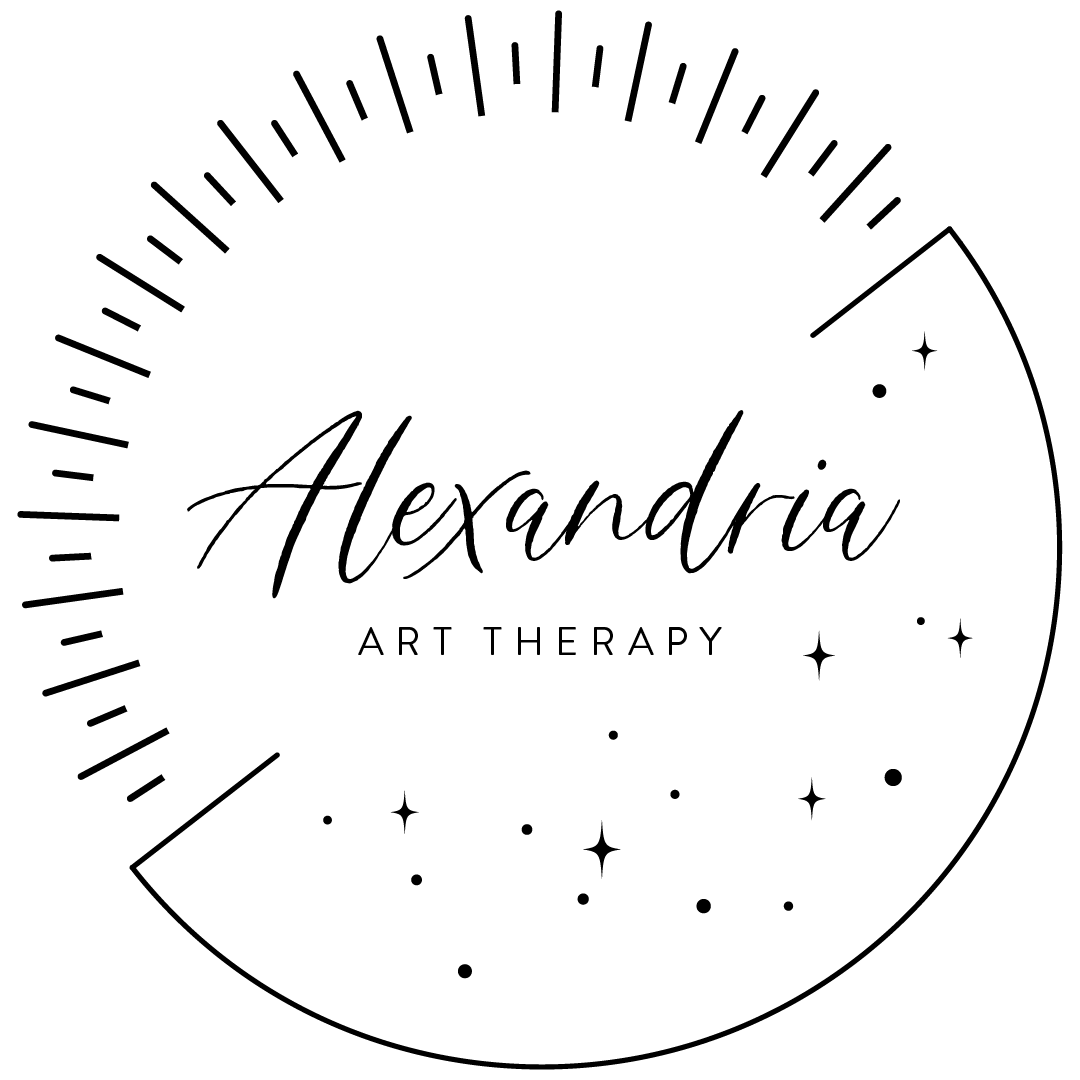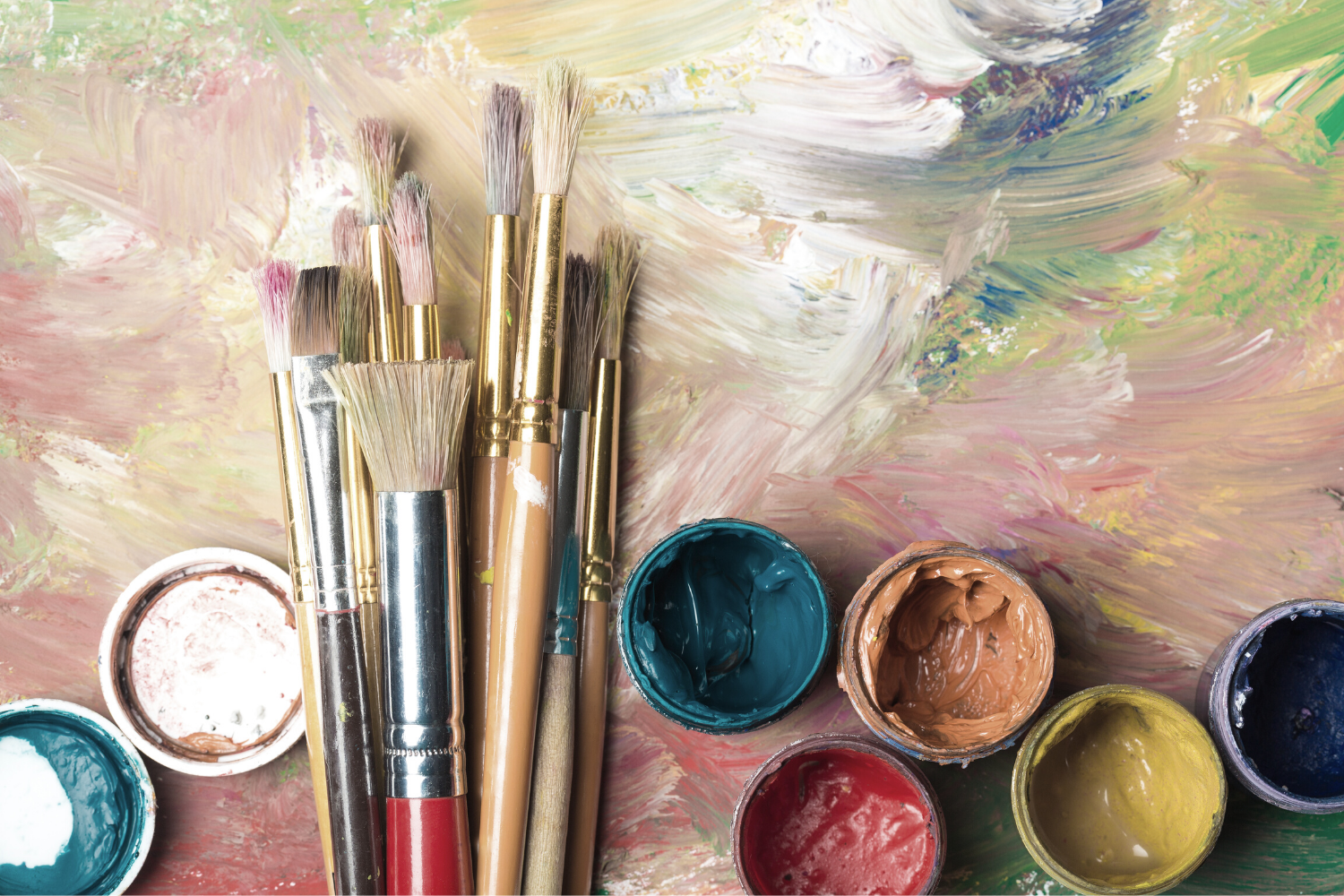20 Prompts for Art Making
Art making is innately human. It can help us express what feels impossible to put into words. It can help us feel connected in times of isolation or struggle.
You may already identify as a creative person--you know the positive mental health benefits of creating art, but you're looking for some fresh ideas. Or maybe you're just beginning to tap into art making as a healing tool.
As you explore these prompts, remember that art making should not solely be about an end result. You may like what you create at the end of an exercise, or you may be disappointed if it turns out to be less aesthetically pleasing than the image you had in your head,
The flow state you may enter while creating art is just as valuable as the final product. The feelings, memories, or ideas that appear in your art are even more important than the materials or techniques you use.
Savor the process. Get to know yourself along the way.
We hope you find healing and meaning in this list of 20 prompts. You can also click here to download the prompts as a PDF for printing, saving, or sharing.
1 - RITUAL FOR CHANNELING IN
Imagine what you would like to channel into your life. Maybe this is something completely new or more of what already feels good. Start with a blank piece of paper. Find a circular item to trace a mandala, or circle, on your page. The circle can provide a container for your imagery. Create an image using lines, shapes, colors, and/or words that represent the feelings, rituals, or healthy actions you would like to channel in. Honor whatever emerges on the page. Notice and reflect with loving kindness, compassion, and acceptance.
2 - OPEN YOUR WINDOW OF NOTICING
Tom Vanderbilt describes our early impressions about a new place or a person as being like a window of noticing--”open in the beginning,” but later “fogged up by familiarity.” Take yourself on a field trip somewhere new (large scale: a trip to a new city or country, small scale: a visit to a shop, library, or park you’ve never seen before in your own city). Use your phone to take four snapshots of the first things you notice about this place. Then, at home, create a piece of art capturing these images. (You might divide your canvas or paper like a windowpane and fill each square of “glass” with colors, shapes, or depictions of what you saw.) How can you begin to open your window of noticing in more familiar environments?
3 - GROWTH ENVIRONMENT
Create an image depicting your environment of growth over the last few years. Did you experience the pandemic like a trap? A den? A cocoon? Did you feel more exposed, unable to isolate? What nurtured you or harmed you during this time of distance and change? Even in times of stagnation, we are still growing and changing.
4 - DAY PLANNER
Create a visual day planner of your ideal day. In a world without work, caregiving, or household responsibilities, how would you choose to spend your time each day? Consider space in your art for morning, noon, and evening hours. How is your ideal day planner similar to how you currently are able to spend your time? How is it different? Are there ways you can adjust your “reality” day to contain more of the things that appeared in your artwork?
5 - TAP INTO THE TEMPORARY
When was the last time you made art without overthinking it? Using chalk, tap into the temporary: make basic lines, shapes, words, or images on the sidewalk or pavement near your home. (If you don’t have chalk, grab a paintbrush and a cup of water!) What does the sensation of working on the ground make you remember? Leave your art to be cleared away by the weather, or wash it away before you return indoors.
6 - ROAD TO WELLBEING
Create an image that represents your road to authentic wellbeing. Consider the type of road, roadblocks, shortcuts, scenery or location. Include everything on or around this path. What does it represent?
7 - THUMBPRINT
Study your thumbprint and draw the lines of it on a piece of paper. In the space between the lines, write “I Am” statements that explore your identity or things you like.
8 - ALTERNATE SILVER LININGS
The concept of “silver linings” can sometimes be unhelpful when you’re having a tough time. Toxic positivity tells us to put on a smile and be grateful things aren’t worse, when often life is hard and unfair, and the systems meant to support us are failing or broken. Explore doing it your own way: rather than seeking out a silver lining where one doesn’t exist, create an image of the sky that feels accurate to your world. Add cloud outlines in a color you choose.
9 - CREATE A VESSEL
Our life experiences create memories that may be hurtful or traumatizing. We have a tendency to ignore or avoid these memories, but they influence us nonetheless. Using clay, or on your canvas or paper, form or draw a vessel. It can be a bowl, cup, pot, or vase, with a lid or without. Imagine you are giving your painful memories over to the vessel to hold for a while. If your vessel is made of clay, you might write your memories out on slips of paper and put them inside. If your vessel is on canvas or paper, you might create images or write within the outline of the shape itself.
10 - MINDFUL PHOTOGRAPHY
Each day this week, take at least three photos of your everyday life. Try to capture moments of joy, calm, or positive feelings. Add them to an album in your phone. You can post the photos online if you like, or keep them to yourself. At the end of the week, look through your album and notice how you feel in revisiting the photos.
11 - MOVING BACK INTO THE WORLD
On your paper or canvas, draw an arch from one side of the paper to the other (or trace half the rim of a large bowl). Then make a second arch so that an arched stripe runs across your canvas. In the large space closest to you, use color, shapes, lines, or words to represent how your home has felt during the pandemic. Think of the stripe in the middle of your canvas like a mask--a barrier. As we ease back into the world, what boundaries do you want to continue to hold in your life? (Literal: barriers against germs, or abstract: toxic relationships.) Fill this section with words, ideas, or colors representing those things. Now shift your attention to the top part of your paper. This represents the outside world. Again, use shapes, colors, lines, and words, this time depicting how you are feeling about the environment outside your home.
12 - NATURE WALK
Re-visit an activity from childhood. Take a walk outdoors, and as you walk, collect samples: look for colors and interesting textures. A rock, a flower, a berry. A discarded item or even a piece of trash. After your walk, use your items as inspiration for a piece of art--a photograph of the items assembled together, a collage of leaves, or a painting or drawing using the colors or shapes from your found objects.
13 - LANDSCAPES OF HOME
What landscapes are a part of you? Make an image that combines the landscapes you have lived in (mountains, forest, rivers, even suburbs!). What trees, flowers, or birds are present? Add buildings or landmarks, if you wish. What colors come to mind when you think about different periods of your life? When your art is complete, take note of your emotions: do you feel fond or sentimental towards these landscapes, or do you wish to put distance between yourself and what you see? What does this tell you about how you have grown?
14 - BLIND CONTOUR DRAWING
While looking at yourself in a mirror, place a pen to paper and draw a self portrait without looking at the page or lifting your hand. What parts of your finished drawing feel like your true self? What parts are exaggerated?
15 - ON THE HORIZON
Draw a horizontal line bisecting your paper. First, work only on the bottom half, closest to you. Using color, shapes, lines, or words, make marks that represent how you are feeling today--things you are experiencing now. Then, on the top half, focus on what you hope will happen in the future. Is there a shift in color? In design? Heaviness or lightness? Is there little contrast at all? Leave your work as a whole, or cut your paper in half, keeping only the part that helps you most.
16 - HEALING SPACE
Create an image that represents a space for healing. This space has everything you need for safety--physical and emotional. It is a space that you can connect with your thoughts and emotions to heal that which does not serve you in your present life. Consider: is this space inside, outside, or both? What sounds, sights, tastes, textures, scents, and beings exist in this space? Add everything you need to support your health.
17 - ASKING FOR HELP
Many of us have a very hard time asking for help. Draw a circle on your paper by tracing a round object with pencil. Within the circle, use colors, lines, shapes, and words to express the kind of help you wish you could receive. When you are finished, erase the original pencil line containing your art. What on your page would be easy to ask for? What would be hard? What can stay on the page, and what do you need to release to someone else for support?
18 - CONNECTED SENSES
Explore the connection between your senses. Create a piece of art in response to a scent or sound. Light a favorite scented candle, smell an essential oil, or play music. Paint or use another medium as you experience the other sense. Scent, especially, has deep ties to memory, and familiar music can also take you back to other moments in your life. Let these images appear in your art, or let them guide the colors and shapes you choose.
19 - WORRY CANVAS
Create an image or collage that represents your worries. What do you find your mind cannot let go before you go to sleep? What are the things that lay heavy on you at the moment? Use lines, shapes, colors, or mixed media to allow them to live on the canvas or page. Now that your worries exist outside of your body, decide what to do with them: shut them in a portfolio or drawer, paint over them with a new layer of paint, burn or destroy the canvas?
20 - IMAGINE WHAT’S POSSIBLE
Writer and activist bell hooks said “The function of art is to do more than tell it like it is. It’s to imagine what’s possible.” Create a piece of art that imagines what is possible in your own life. With your images, make room for the possibility of things going well.

